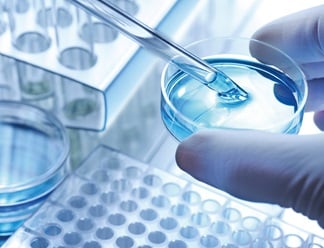HARTMANN SCIENCE CENTER

About 3.8 million people across Europe contract a nosocomial infection during a hospital stay every year [1]. Although the majority of these infections are due to endogenous causes such as the body's own microbial flora, up to 20 % are caused exogenously -i.e. by pathogens originating from outside [2]. Whereas until half a century ago the fight against nosocomial infections relied almost exclusively on handhygiene, today we know that multimodal approaches to hospital hygiene are necessary. Studies have shown that numerous clinically relevant pathogens can survive not only for days, but in some cases for several months on (especially frequently touched) surfaces, and that this transmission route contributes significantly to nosocomial infections [3-5]. Thus, if final disinfection is inadequate, patients can becolonised or infected with germs left behind by previously ill patients [6, 7].
But how
should healthcare facilities go about minimising these transmissions? The recommended practices for
routine cleaning and disinfection in healthcare facilities were published in 2021 by Professor Ojan Assadian
et al [8]. While focusing on cleaning procedures
without a concrete suspicion of germs, the publication also contains a
practical overview of the management of various clinically relevant pathogens.
The following tables provide examples of bacteria, fungi, and viruses that frequently occur in health care facilities, showing which efficacy is required against them and which products are suitable for surface disinfection

Sources:
1. Suetens C etal. (2018) Prevalence of healthcare-associated infections, estimated incidenceand composite antimicrobial resistance index in acute care hospitals andlong-term care facilities: results from two European point prevalence surveys,2016 to 2017. Euro Surveill 23: 1800516.
2. GastmeierP (2020) From “one size fits all” to personalized infection prevention. J HospInfect 104: 256–260.
3. Kramer A etal. (2006) How long do nosocomial pathogens persist on inanimate surfaces? Asystematic review. BMC Infect Dis 6: 130.
4. Rutala W etal. (2018) Enhanced disinfection leads to reduction of microbial contaminationand a decrease in patient colonization and infection. Infect Control Hosp Epidemio 39: 1118–1121.
5. Otter J etal. (2011) The role played by contaminated surfaces in the transmission ofnosocomial pathogens. Infect Control Hosp Epidemiol 32: 687–699.
6. Wu Y et al.(2019) Exposure to infected/colonized roommates and prior room occupantsincreases the risks of healthcare-associated infections with the same organism.J Hosp Infect 101: 231–239.
7. Mitchell Bet al. (2015) Risk of organism acquisition from prior room occupants: asystematic review and meta-analysis. J Hosp Infect 91: 211–217.
8. Assadian Oet al. (2021) Practical recommendations for routine cleaning and disinfectionprocedures in healthcare institutions: a narrative review. J Hosp Infect 113: 104–114.